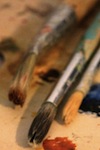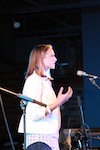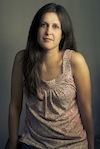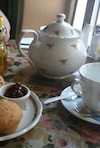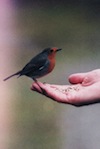In this grand vocation of teaching kids about the world, it’s important to give careful thought to the environments we create for them to grow up in — grandparents’ homes included. Our homes are not neutral places, but rather culture-shaping places. We’re helping to form ideas, attitudes, imagination, compassion, and skills. Our little people will one day be big people who take their places in the flow of history. In hundreds of vocational spheres — as mothers and fathers, artists and scientists, shopkeepers and CEOs — our children and grandchildren will grow up to be the culture-makers of their generation.
 I remember the first time someone actually purchased one of my CDs. It was 1999 at a roller-skating rink in Sacramento, California, where I was opening for a ska band (a story unto itself). The kid who made the purchase had blue hair and was probably sixteen. He handed me sweaty cash from his pocket saying, “I didn’t think I’d like you,” which I took as a compliment. Further, I took it as a sign that I’d made a connection and, as corny as it may sound, I was actually moved.
I remember the first time someone actually purchased one of my CDs. It was 1999 at a roller-skating rink in Sacramento, California, where I was opening for a ska band (a story unto itself). The kid who made the purchase had blue hair and was probably sixteen. He handed me sweaty cash from his pocket saying, “I didn’t think I’d like you,” which I took as a compliment. Further, I took it as a sign that I’d made a connection and, as corny as it may sound, I was actually moved. I remember the first time someone actually purchased one of my CDs. It was 1999 at a roller-skating rink in Sacramento, California, where I was opening for a ska band (a story unto itself). The kid who made the purchase had blue hair and was probably sixteen. He handed me sweaty cash from his pocket saying, “I didn’t think I’d like you,” which I took as a compliment. Further, I took it as a sign that I’d made a connection and, as corny as it may sound, I was actually moved.
I remember the first time someone actually purchased one of my CDs. It was 1999 at a roller-skating rink in Sacramento, California, where I was opening for a ska band (a story unto itself). The kid who made the purchase had blue hair and was probably sixteen. He handed me sweaty cash from his pocket saying, “I didn’t think I’d like you,” which I took as a compliment. Further, I took it as a sign that I’d made a connection and, as corny as it may sound, I was actually moved.




















